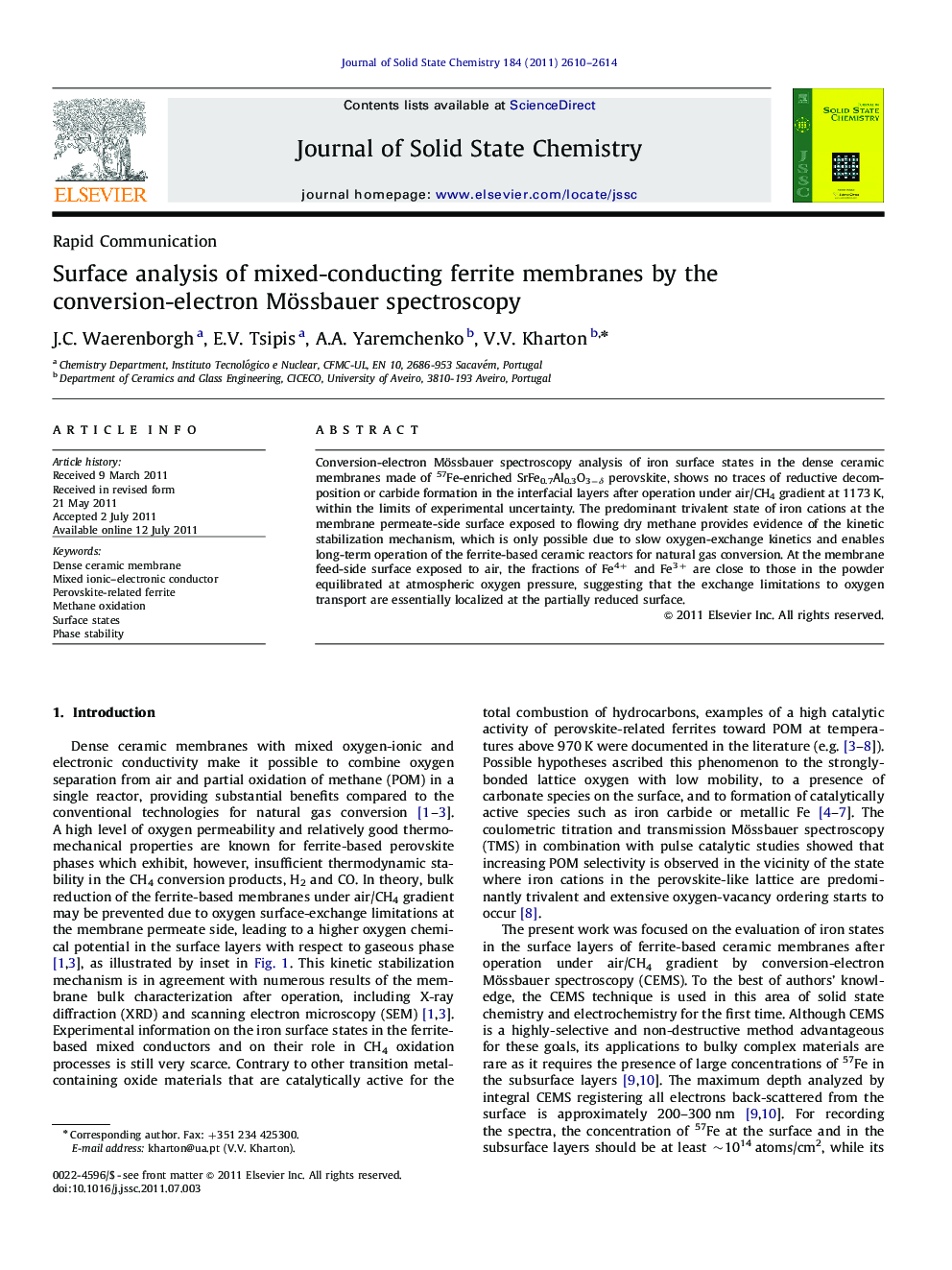| Article ID | Journal | Published Year | Pages | File Type |
|---|---|---|---|---|
| 1329103 | Journal of Solid State Chemistry | 2011 | 5 Pages |
Conversion-electron Mössbauer spectroscopy analysis of iron surface states in the dense ceramic membranes made of 57Fe-enriched SrFe0.7Al0.3O3−δ perovskite, shows no traces of reductive decomposition or carbide formation in the interfacial layers after operation under air/CH4 gradient at 1173 K, within the limits of experimental uncertainty. The predominant trivalent state of iron cations at the membrane permeate-side surface exposed to flowing dry methane provides evidence of the kinetic stabilization mechanism, which is only possible due to slow oxygen-exchange kinetics and enables long-term operation of the ferrite-based ceramic reactors for natural gas conversion. At the membrane feed-side surface exposed to air, the fractions of Fe4+ and Fe3+ are close to those in the powder equilibrated at atmospheric oxygen pressure, suggesting that the exchange limitations to oxygen transport are essentially localized at the partially reduced surface.
Graphical AbstractConversion-electron Mössbauer spectroscopy analysis of dense ceramic membranes made of 57Fe-enriched SrFe0.7Al0.3O3−δ perovskite, shows no reductive decomposition in thin interfacial layers after testing under air/CH4 gradient, enabling stable operation of the ferrite-based ceramic reactors for partial oxidation of methane. Figure optionsDownload full-size imageDownload as PowerPoint slideHighlights► Conversion-electron Mössbauer spectroscopy is used for mixed-conducting membranes. ► No decomposition is detected in the membrane surface layers under air/CH4 gradient. ► Due to kinetic stabilization, Fe3+ states prevail at the surface exposed to methane. ► Transmission Mössbauer spectra show perovskite decomposition on equlibration in CH4. ► Ferrite-based ceramic reactors can stably operate under air/CH4 gradient.
